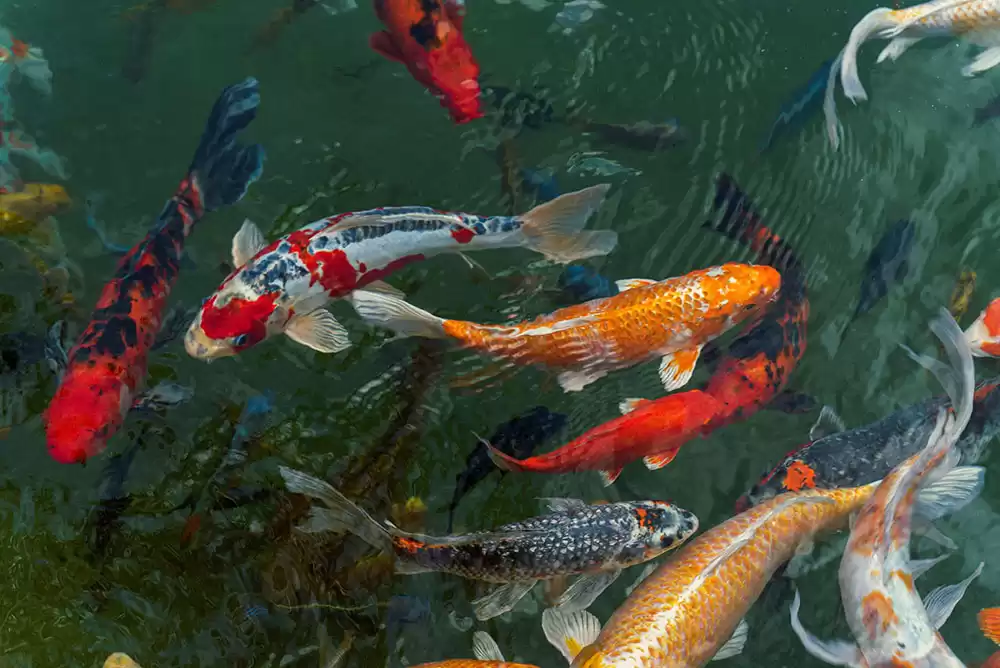
01 May Everything You Need to Know About Feeding Koi
As a Southern California pond owner, ensuring the health and vitality of your koi is essential. Proper feeding is one of the fundamental aspects of koi pond maintenance. At Aquatic Gardens, we understand the significance of providing comprehensive guidance on this matter. In this article, we will explore everything you need to know about feeding your koi to promote their well-being and enhance their beauty.
Importance of Proper Koi Feeding:
Proper feeding is crucial for your koi’s overall health, growth, and coloration. A balanced diet ensures that your fish receive essential nutrients, vitamins, and minerals for their immune system, growth, and vibrant colors.
Types of Koi Food:
Various types of koi food are available, including pellets, flakes, and gel-based formulas. Each type has its advantages and is formulated to meet the specific dietary requirements of koi at different stages of life. Pellets are the most common and offer a convenient way to provide a balanced diet.
Feeding Frequency and Quantity:
Koi should be fed 2-4 times daily during warmer months when their metabolism is higher. However, in cooler months, feeding frequency may decrease to 1-2 times daily. Feeding them an amount they can consume within five minutes is essential to prevent overfeeding and water pollution.
Feeding Techniques and Best Practices:
To maintain water quality and prevent food wastage, consider using a feeding ring or designated feeding area to concentrate the food and minimize scattering. Additionally, observe your koi while feeding to ensure each fish gets its share and adjust feeding practices as needed. Consider adding probiotics, as these have been shown to improve the efficiency of koi feed.
Monitoring Koi Health Through Feeding Habits:
Regularly observing your koi during feeding can provide valuable insights into their health. Changes in appetite, behavior, or feces may indicate underlying health issues that require attention.
Overfeeding and Its Consequences:
Overfeeding is a common mistake that can lead to various problems, such as poor water quality, obesity, and digestive issues. Uneaten food decomposes, increasing ammonia and nitrite levels in the water, which can harm your koi and other pond inhabitants.
Underfeeding and Its Impact on Koi Health:
Conversely, underfeeding can result in stunted growth, weakened immune systems, and reduced vitality. It is essential to strike a balance and provide adequate nutrition to support your koi’s health and well-being.
Feeding Strategies for Optimal Koi Growth and Coloration:
To promote optimal growth and vibrant coloration, consider feeding high-quality food rich in protein, vitamins, and pigments. Supplementing their diet with color-enhancing treats can further enhance their natural beauty.
Adjusting Feeding Regimen Based on Pond Conditions:
Environmental factors such as water temperature, season, and pond size can influence your koi’s feeding requirements. Adjust feeding frequency and quantity accordingly to accommodate changing conditions and meet your koi’s nutritional needs.
Supplementary Feeding and Treats for Koi:
In addition to their staple diet, consider supplementing your koi’s nutrition with treats such as fruits and vegetables and live foods like worms or brine shrimp. However, treats should be offered in moderation to prevent nutritional imbalances.
In conclusion, proper feeding is essential for maintaining your koi’s health, vitality, and beauty.
By following these guidelines and implementing best practices, you can ensure your beloved fish thrive in their aquatic environment. At Aquatic Gardens, we’re dedicated to providing you with the knowledge and resources to care for your koi and create a stunning pond ecosystem for years.



